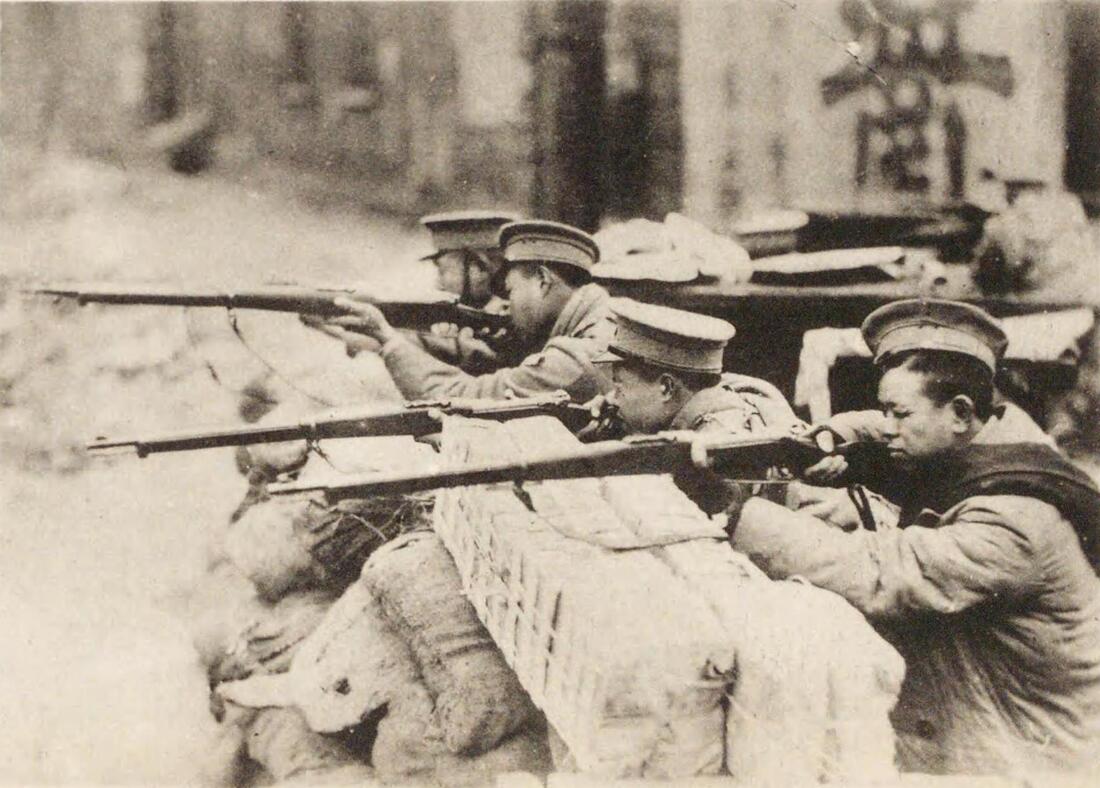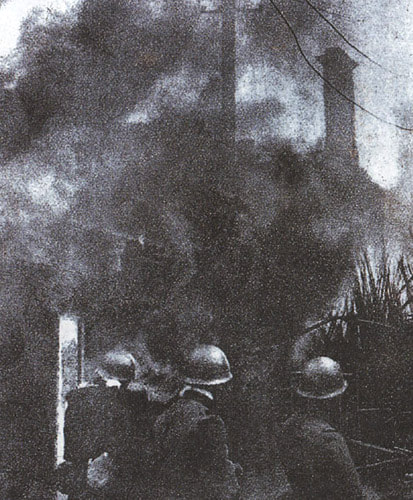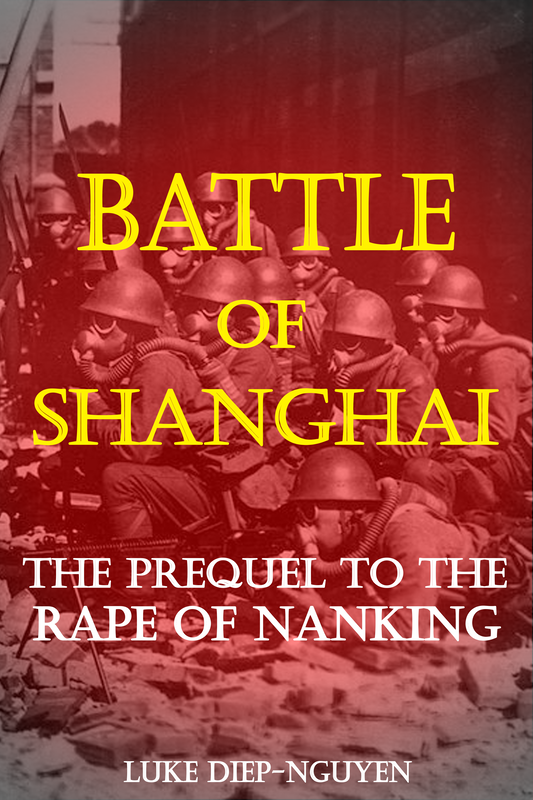- Home
- Stories
-
Internship
- Summer 2024 Internship
- Summer 2023 Internship
- Fall 2022 Internship
- Summer 2022 Internship
- Summer 2021 Internship
- Fall 2020- Spring 2021 Internship
- Summer 2020 Internship
- Fall 2019 Internship
- Summer 2019 Internship >
- School Year 2018-2019 Internship
- Summer 2018 Internship >
- Fall 2017 Internship
- Summer 2017 Internship >
- Books
- Archives
-
Resource Page
-
Supplementary Research Guides
>
- Unit 731 - Guide >
-
Philippines' Resistance - Guide
>
- Philippines World War II Timeline
- The Japanese Invasion & Conquest of the Philippines
- Bataan Death March
- Formation of Underground Philippines Resistance
- Supplies of the Guerrilla Fighters
- The Hukbalahap
- Hunter's ROTC
- Marking's Guerrillas
- United States Army Forces in the Philippines of Northern Luzon (USAFIP-NL)
- The Aetas
- Chinese and Filipino-Chinese Nationalist Guerrilla Units
- The Female Faces of the Philippine Guerrillas
- Rising Sun Flag - Guide >
- Pinay Guerrilleras - Guide >
- Fall of Singapore - Guide >
- Three Years and Eight Months - Guide >
- Siamese Sovereignty - Guide >
- The Khabarovsk War Crimes Trial - Guide >
- Unit 731 Cover-up : The Operation Paperclip of the East - Guide >
- Marutas of Unit 731 - Guide >
- Prince Konoe Memoir - Guide >
- Competing Empires in Burma - Guide >
- Battle of Shanghai - Guide >
- Ishi Shiro - Guide >
- Taiwan The Israel of the East - Guide >
- Seeking Justice for Biological Warfare Victims of Unit 731 - Guide >
- Rice and Revolution - Guide >
- Clash of Empires - Guide >
-
Hunger for Power and Self-SufficiencyI - Guide
>
- The Influence of War Rations on Post-War Culinary Transformations
- How World War II Complicated Food Scarcity and Invention
- American Military Innovations
- Government-Sponsored Food Inventions in Europe during World War II
- Feeding the Army: The Adaptation of Japanese Military Cuisine and Its Impact on the Philippines
- Mixed Dishes: Culinary Innovations Driven by Necessity and Food Scarcity
-
Denial A Quick Look of History of Comfort Women and Present Days’ Complication - Guide
>
- The Comfort Women System and the Fight for Recognition
- The Role of Activism and International Pressure
- The Controversy over Japanese History Textbooks
- The Sonyŏsang Statue and the Symbolism of Public Memorials
- Activism and Support from Japanese Citizens
- The Future of Comfort Women Memorials and Education
- Echoes of Empire: The Power of Japanese Propaganda - Guide >
- Lesson Plans >
-
Supplementary Research Guides
>
1932
The battle of Shanghai in 1937 was not the only Japanese military conflict with the Chinese in that city. At the start of 1932, after years of prejudice and discrimination based tension and hostility between the two ethnic communities, the Japanese government decided to respond militarily against the discrimination that Japanese nationals faced and sent the navy and army support them. The battle involved the mass destruction of a city and a considerable number of both military and civilian casualties. The catastrophe that Shanghai faced in 1932 became a precursor to the battle between Japan and China in 1937. Both battles became indications of modern urban warfare and the mass destruction and devastation it was possible to inflict. In later years, the consequences of battles in Stalingrad, Manila, and Ortona would echo those of the two battles of Shanghai. Following an attack on Japanese Buddhist priests by Chinese workers who were members of the Anti-Japanese Association, Japanese General-Consul Murai demanded an apology from the mayor of Shanghai as well as the attackers’ arrest and suppression of all anti-Japanese organizations and activities in the city. While the mayor accepted and agreed to those demands, the Chinese military force in Shanghai, which consisted of the 19th Route Army and the 5th Army, was positioned in the city. The 19th Army was positioned in the Hongkew and Chapei (Zhabei) districts. Feeling threatened by that military presence, the Japanese decided to deploy a defensive naval landing based on the need for protection in the event of military action against the Japanese settlement. On January 28th, the initial skirmish took place in the Hongkew district following the arrival of the Japanese naval force. The 19th Army was also threatened by the Japanese troops as they entered the district and set up a defensive position, which ultimately led to a firefight between the two. The Japanese troops felt strongly that their involvement with the Chinese was an act of self-defense.
Chinese military police in combat
At the onset of the battle, only 3,000 Japanese troops faced 31,000 Chinese troops of the 19th Route Army. In an attempt to level the playing field, the Japanese Navy dispatched an aircraft carrier to launch an aerial assault against the Chinese positions in the Chapei district without endangering their Japanese nationals. The Japanese naval air force took the most effective measures. First, reconnaissance planes were sent to mark targets in advance of the bombers. Secondly, to ensure the accuracy of their bombing and guarantee that there would be no accidental bombing on the Japanese positions, the Japanese flew as close to the ground as permitted. Finally, targets that were marked for the most effectiveness included Chinese military positions, supply trains, and a mass gathering of Chinese troops, which seemed to be a possible position for an attack. Unfortunately, because the planes flew at a low altitude, they were vulnerable to ground fire. Following the bombing, a truce was proposed and established to provide a neutral zone in the Chapei district where peaceful Shanghai residents could be evacuated to avoid the battle. During the truce, however, the Chinese military attempted to reinforce their position which the Japanese felt was a violation of the truce. In response to the Chinese military build-up, the Japanese naval party called for reinforcements of their own, which recommenced the fighting in February.
January 28 incident
On February 6, the Japanese 9th Division, the 24th Mixed Brigade detachment from the 12th Division, and two squadrons were formed to organize an expeditionary force to reinforce the navy force. The Japanese reinforcements landed at Shanghai between February 13 and February 16. Following the arrival of the Japanese expeditionary force, Lieutenant-General Kenkichi Uyeda established around the Japanese community a safeguard against threats from the Chinese military. He met with the 19th Route Army’s Chief of Staff of to propose an end to hostilities between the Japanese and Chinese and to propose that both military forces withdraw 20 km from their positions by February 20 at 7 a.m., which would ensure that the Chinese military respected the proposal. While the Japanese remained in the Japanese district of Shanghai, upon ending the conflicts, they would not take any offensive actions against the Chinese and only act as a protective force. By February 20, the Chinese had not withdrawn their military. Lt. General Uyeda felt this was an act of defiance and a rejection of the proposal. At 7:30 in the morning, after the Chinese military had been scheduled to withdraw from their position, the Japanese 9th Division took offensive action, making multiple simultaneous assaults. The 9th Division and 24th Mixed Brigade pushed against the Chinese defenses at the Woosung (Wusong) and Kiangwan (Jianghan) districts at the port end. At the same time, the Japanese landing party cleared Chinese positions in Chapei, and the two groups hoped to meet in the middle and expel the Chinese military force from Shanghai. The Japanese also provided artillery and aerial support for their expeditionary force. Despite stubborn resistance at Kiangwan and Woosung, by the end of the next day, the Japanese had forced the Chinese troops to the edge of the districts. Concurrently, the Japanese Naval Landing Party had also pushed elements of the Chinese 19th Route Army out of Chapei and set up a defensive perimeter around their position.
Japanese troops burning residential districts
At midnight on the 22nd, the Chinese launched a series of counterattacks under artillery support, but every single one was repelled. By the third day of fighting, the Japanese 9th Division had begun to move against Miaohang to the left of the Kiangwan district. Like the Chinese positions at Kiangwan and Woosung, Miaohung also had a strong, organized defensive position with well-prepared defenses. To create an opening in the Chinese lines, on the night of the 21st to 22nd, the Japanese dispatched engineers and explosive squads to cut the wire emplacements under cover of darkness and smoke screens. Sergeant Umada gathered three parties of three men to be led by himself to set explosives and use wire cutters to exploit the Chinese defenses. Each party sent either was killed, disabled, or driven back due to heavy firing from the Chinese positions. After his entire group was incapacitated, Sergeant Umada ran into the lines lobbing hand grenades to cause confusion, which allowed him to cut the wire emplacements. That deed allowed Japanese troops to exploit the gap and capture that sector of Miaohang.
Related Book
Guide: Battle of Shanghai:
|
|
Pacific Atrocities Education
730 Commercial Street San Francisco, CA 94108 415-988-9889 |
Copyright © 2021 Pacific Atrocities Education.
We are a registered 501 (c)(3) charity. |
- Home
- Stories
-
Internship
- Summer 2024 Internship
- Summer 2023 Internship
- Fall 2022 Internship
- Summer 2022 Internship
- Summer 2021 Internship
- Fall 2020- Spring 2021 Internship
- Summer 2020 Internship
- Fall 2019 Internship
- Summer 2019 Internship >
- School Year 2018-2019 Internship
- Summer 2018 Internship >
- Fall 2017 Internship
- Summer 2017 Internship >
- Books
- Archives
-
Resource Page
-
Supplementary Research Guides
>
- Unit 731 - Guide >
-
Philippines' Resistance - Guide
>
- Philippines World War II Timeline
- The Japanese Invasion & Conquest of the Philippines
- Bataan Death March
- Formation of Underground Philippines Resistance
- Supplies of the Guerrilla Fighters
- The Hukbalahap
- Hunter's ROTC
- Marking's Guerrillas
- United States Army Forces in the Philippines of Northern Luzon (USAFIP-NL)
- The Aetas
- Chinese and Filipino-Chinese Nationalist Guerrilla Units
- The Female Faces of the Philippine Guerrillas
- Rising Sun Flag - Guide >
- Pinay Guerrilleras - Guide >
- Fall of Singapore - Guide >
- Three Years and Eight Months - Guide >
- Siamese Sovereignty - Guide >
- The Khabarovsk War Crimes Trial - Guide >
- Unit 731 Cover-up : The Operation Paperclip of the East - Guide >
- Marutas of Unit 731 - Guide >
- Prince Konoe Memoir - Guide >
- Competing Empires in Burma - Guide >
- Battle of Shanghai - Guide >
- Ishi Shiro - Guide >
- Taiwan The Israel of the East - Guide >
- Seeking Justice for Biological Warfare Victims of Unit 731 - Guide >
- Rice and Revolution - Guide >
- Clash of Empires - Guide >
-
Hunger for Power and Self-SufficiencyI - Guide
>
- The Influence of War Rations on Post-War Culinary Transformations
- How World War II Complicated Food Scarcity and Invention
- American Military Innovations
- Government-Sponsored Food Inventions in Europe during World War II
- Feeding the Army: The Adaptation of Japanese Military Cuisine and Its Impact on the Philippines
- Mixed Dishes: Culinary Innovations Driven by Necessity and Food Scarcity
-
Denial A Quick Look of History of Comfort Women and Present Days’ Complication - Guide
>
- The Comfort Women System and the Fight for Recognition
- The Role of Activism and International Pressure
- The Controversy over Japanese History Textbooks
- The Sonyŏsang Statue and the Symbolism of Public Memorials
- Activism and Support from Japanese Citizens
- The Future of Comfort Women Memorials and Education
- Echoes of Empire: The Power of Japanese Propaganda - Guide >
- Lesson Plans >
-
Supplementary Research Guides
>


